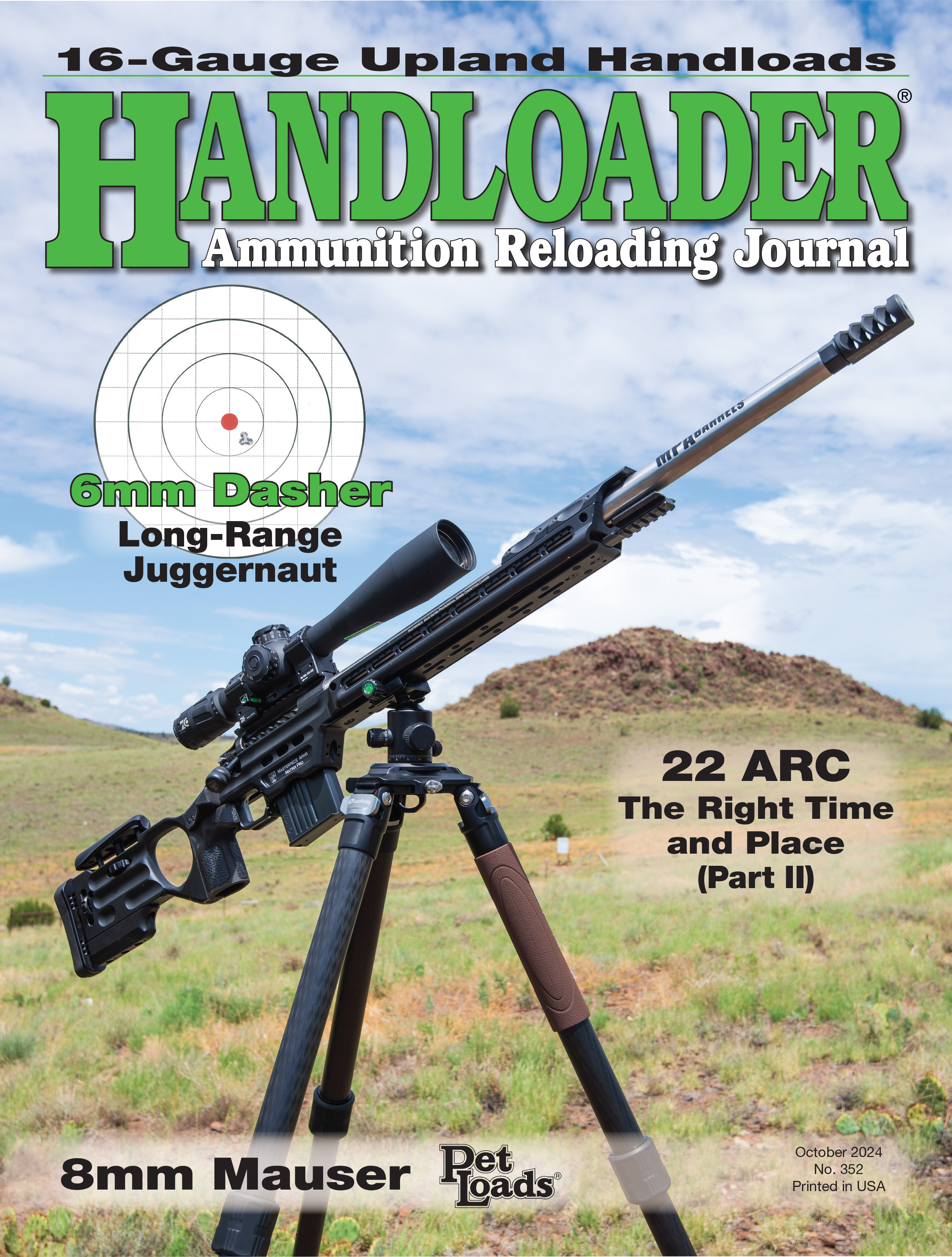Bullets & Brass
Uberti Model 1873 .45 Colt Loads
column By: Brian Pearce |
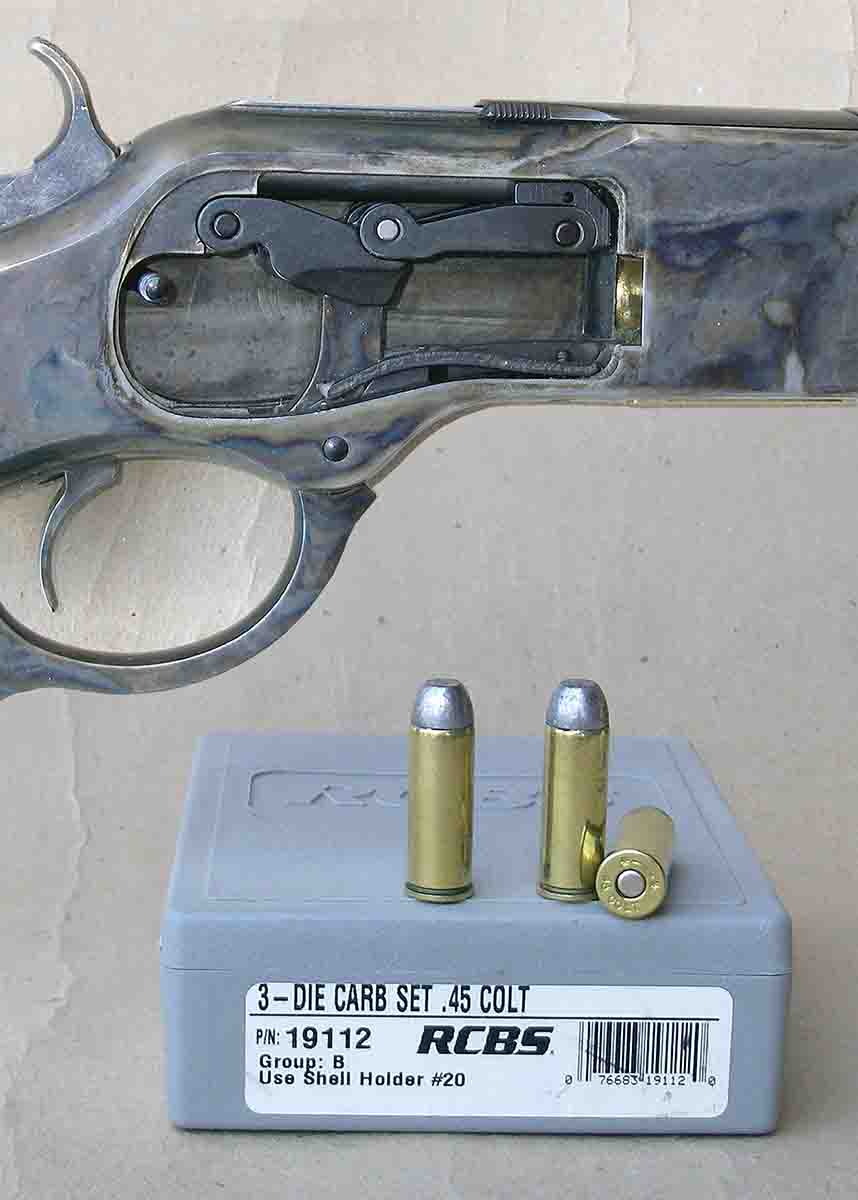
I have typically fired standard pressure or cowboy action loads through them, but with my desire to hunt deer, I have begun considering handloads that would improve their performance. I have read various Internet blogs but don’t always trust that information.
Here is my dilemma. I understand that the brass frames of the Models 1860 and 1866 are not as strong as the steel frames used on the Model 1873s. But since Uberti chambers their Model 1873 in .357 Magnum, and those factory loads have a chamber pressure of 46,000 CUP, can I use .45 Colt loads that are generating 32,000 CUP as outlined by Hodgdon for “Ruger Blackhawk” revolvers? I believe that I already have my answer, as Uberti offers their Model 1873 in .44 Magnum, which is generating greater pressures than the .45 Colt loads that I want to use. Am I missing something here, or is it okay for me to use .45 Colt “Ruger Blackhawk” handloading data?
I very much respect your knowledge and opinion on this matter. I consider Handloader magazine the most informative shooter’s magazine available today. Thanks and keep up the great job. – T.S., via e-mail
A: The toggle link action of the Uberti Model 1873 is not a strong design, and it is the case head thrust that will damage it and should be of most concern. The .357 Magnum is loaded to a maximum average chamber pressure of 35,000 psi (It has been decades since the industry used the 46,000 CUP.), which generates just under 4,000 pounds of head thrust. While I have owned several Uberti Model 1873s in .357 Magnum, I have not experienced problems with this rifle and cartridge combination; however, I am aware of credible reports wherein extensive firing with full-house loads has caused the rifle to develop excess headspace.
For comparison, standard pressure .45 Colt loads that are generating 14,000 psi chamber pressure produce just over 2,500 pounds of head thrust. The .44 Magnum, with a maximum average pressure of 36,000 psi, generates just over 5,900 pounds of thrust. The .45 Colt “Ruger Blackhawk” loads that you reference are generating well in excess of 6,000 pounds of head thrust.
I understand your logic for wanting to use +P .45 Colt loads in your rifle, however I warn you, do not use these “Ruger Blackhawk” high-pressure loads in your rifle! I have corresponded with the Uberti factory in Italy extensively on this subject, and while the translation with engineers has been slow and tedious, my comments are based on facts and not speculation. First, Uberti Model 1873 .44 Magnum rifles are built using different steels and heat-treating processes on select parts, including the bolt. Furthermore, a special heat-treating process on the frame (performed by Beretta) results in notably higher Rockwell hardness than your rifle chambered in .45 Colt. As a result, rifles chambered in .44 Magnum may look identical from the outside, but they are distinctly different from other Model 1873s chambered in different calibers. With all of that said, I still have concerns how well Uberti .44 Magnum rifles will hold up if fired in high volume with full-house .44 Magnum loads.
Again I emphasize, do not fire .45 Colt +P or high-pressure loads intended for the Ruger Blackhawk in your Uberti rifle.
It is worth mentioning that .45 Colt loads generating around 20,000 psi chamber pressure produce slightly less head thrust than .357 Magnum loads. If you choose to use such loads, they should be used sparingly. I would prefer select standard pressure .45 Colt loads that, when fired from a rifle barrel, will closely duplicate .44 Magnum revolver performance, which has proven fully adequate for taking deer.
I hope that insight helps, and good luck hunting with your leverguns.
Winchester 296 in the 9mm
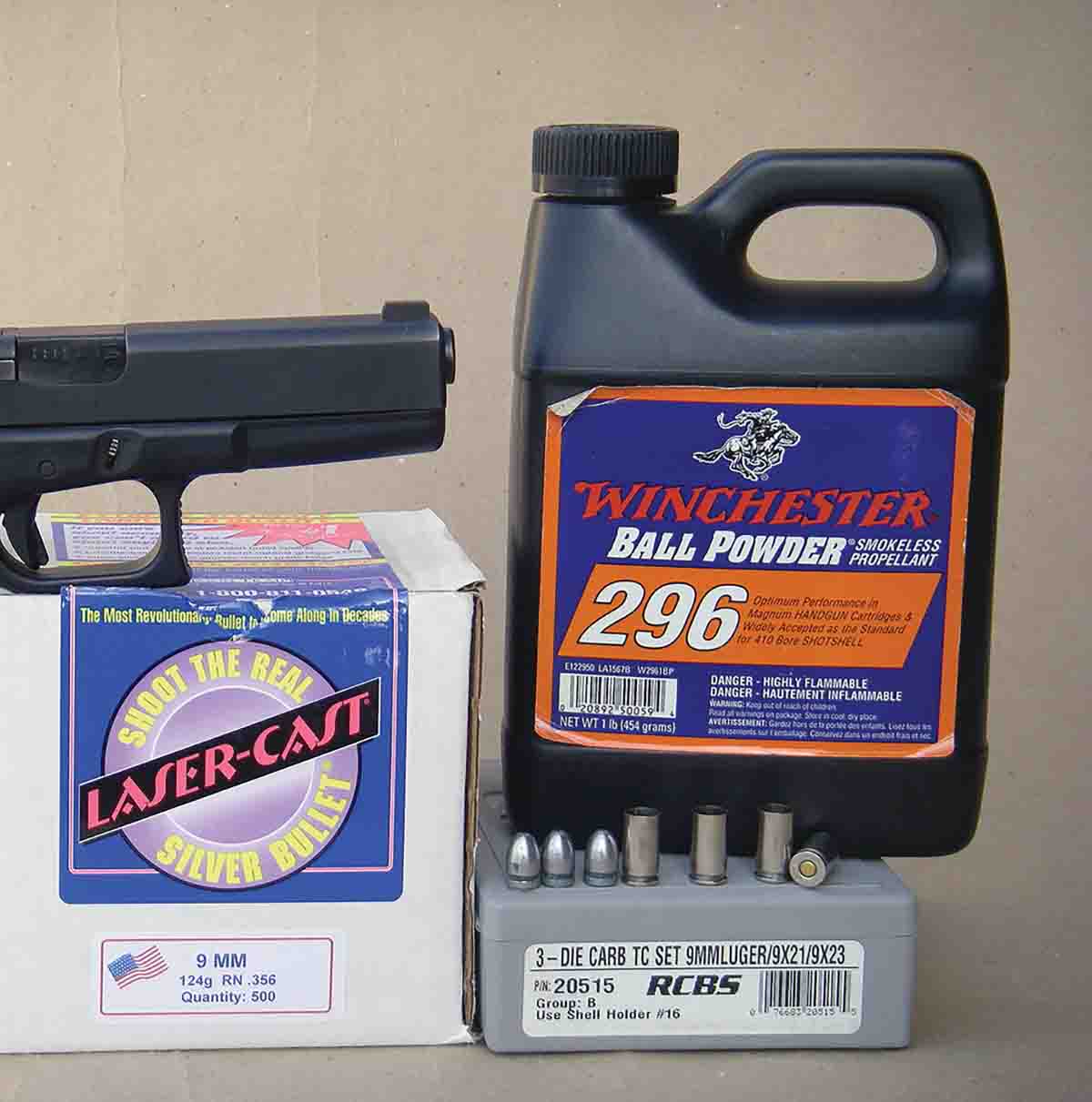
Results were that it shot to point of aim and gave very tight groups at 50 feet. Recoil was very manageable, but the slide gave the feeling that it was barely cycling.
Can you give me an idea of muzzle velocity and pressures? Thanks. – J., via e-mail
A: As discussed in a previous correspondence with you, I do have concerns with your handload, as it may not generate enough pressure to achieve reliable ignition with Winchester 296 powder. Neither was I able to find your load in either the Sierra or Lyman handloading manuals, or any other sources.
Nonetheless, I assembled a quantity of ammunition as you outlined, using Oregon Trail 124-grain roundnose cast bullets seated to an overall cartridge length of 1.150 inches. In a Glock Model 17 test gun, pressures were rather low, while velocities averaged 857 fps. Extreme spreads were 55 fps, which is notably higher than this cartridge produces with a powder that is better suited for this application. As you experienced, the slide cycled far enough to extract and eject cases; they fell straight to the ground, however, and barely cleared the ejection port.
Even though I didn’t experience any squib loads, I still have concerns, as the pressure is too low for this magnum revolver powder to burn correctly. In other words, you might experience hangfires or a stuck bullet in the bore, either of which can be dangerous.
A couple of suggested loads that will produce similar velocities include 2.7 to 2.8 grains of Hodgdon Titegroup or 3.0 grains of Accurate No. 2. Either of these will reliably ignite and offer the performance you are seeking. I hope the above information helps.
.375 Winchester Cast Bullets
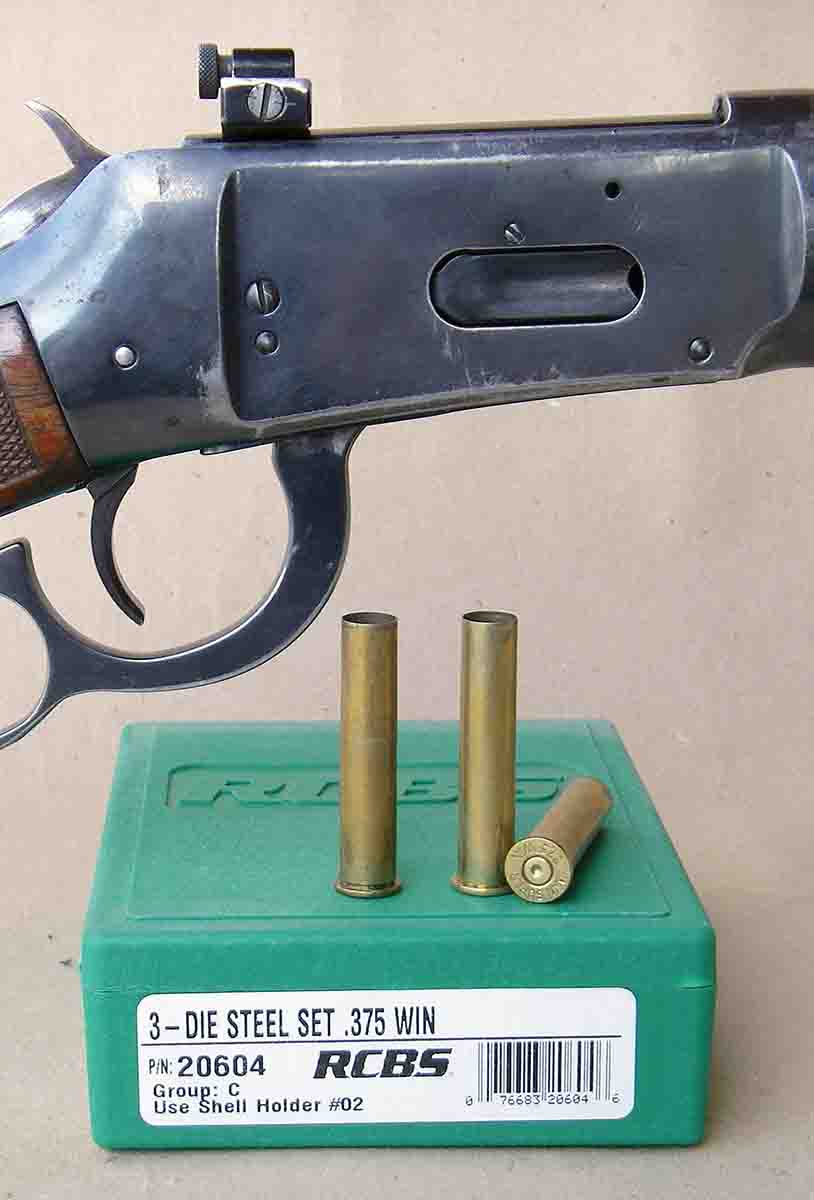
I have loaded some 200-grain jacketed bullets for this rifle to a little over 2,200 fps but would like to try some cast bullets. I wondered if cast bullets would serve my needs. Can you suggest some data with cast bullet loads? Thanks. – K.C., via e-mail
A: You are not alone, as I have had many requests for .375 Winchester handloading data due to ammunition being largely unavailable in recent years.
You don’t specify what bullet weight or velocity that you want to reach, so I will make a couple of suggestions. Montana Bullet Works (www.montanabulletworks.com) offers high-quality, ladle-poured, hand-cast bullets. I would suggest the 264-grain Lyman mould 375449, a flatnose, gas-check bullet designed specifically for the .375 Winchester. Try 32.0 grains of Accurate 2015 powder (slightly compressed) for around 1,900 fps or use 26.0 grains of IMR-4198 for around 1,800 fps. As always, start 2.0 to 3.0 grains below those charge weights and check for signs of excess pressure before using maximum loads. These loads should work well when putting down diseased livestock or when hunting elk, black bear, etc.
I hope this information helps. Thanks for taking the time to write, as it is always good to hear from a working cowboy.
6.5 Creedmoor
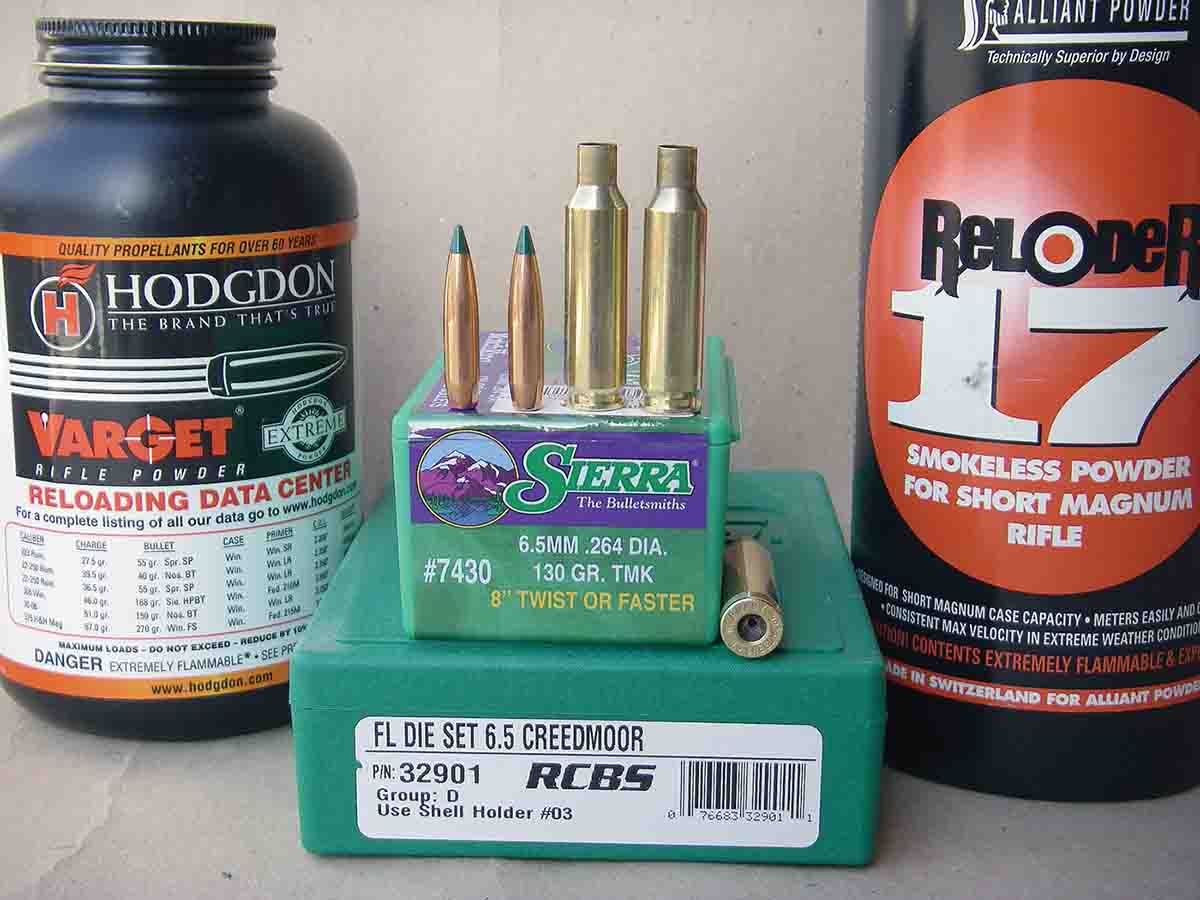
A: Small changes in bullet designs, such as length, bearing surface, etc., can affect pressures. As a result, I would suggest using data that was developed specifically for the Sierra 130-grain TMK bullet.
I would recommend 43.0 grains of Alliant Reloder 17 powder for 2,700 fps or 38.5 grains of Hodgdon Varget for 2,875 fps. (These velocities were recorded from a 26-inch barrel.) A good ball powder load includes 45.0 grains of Winchester 760 for around 2,900 fps. Use the CCI BR-2 or Federal 210M primer and begin with loads that are 5 to 7 percent below the above maximum powder charges.


